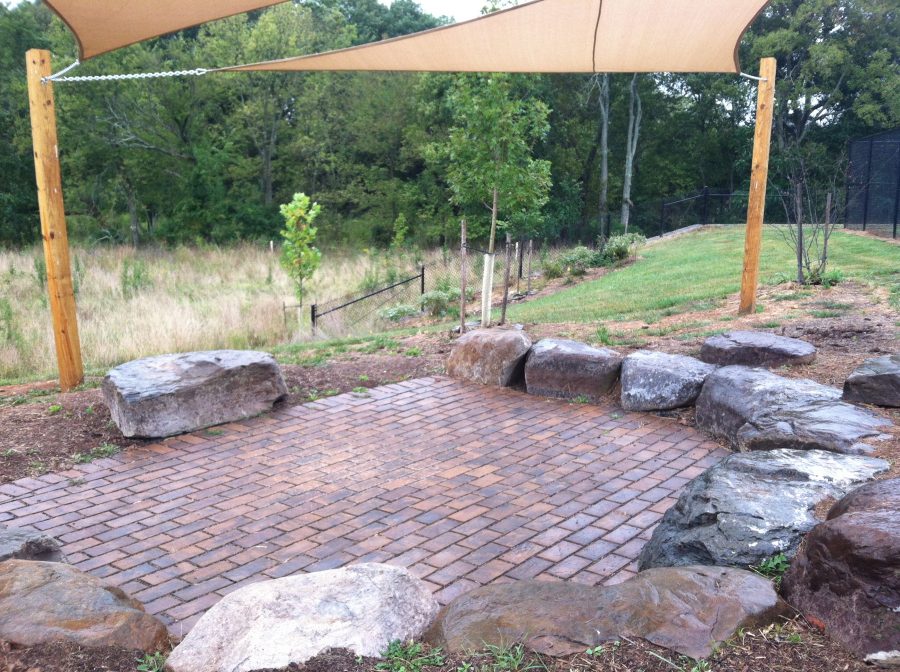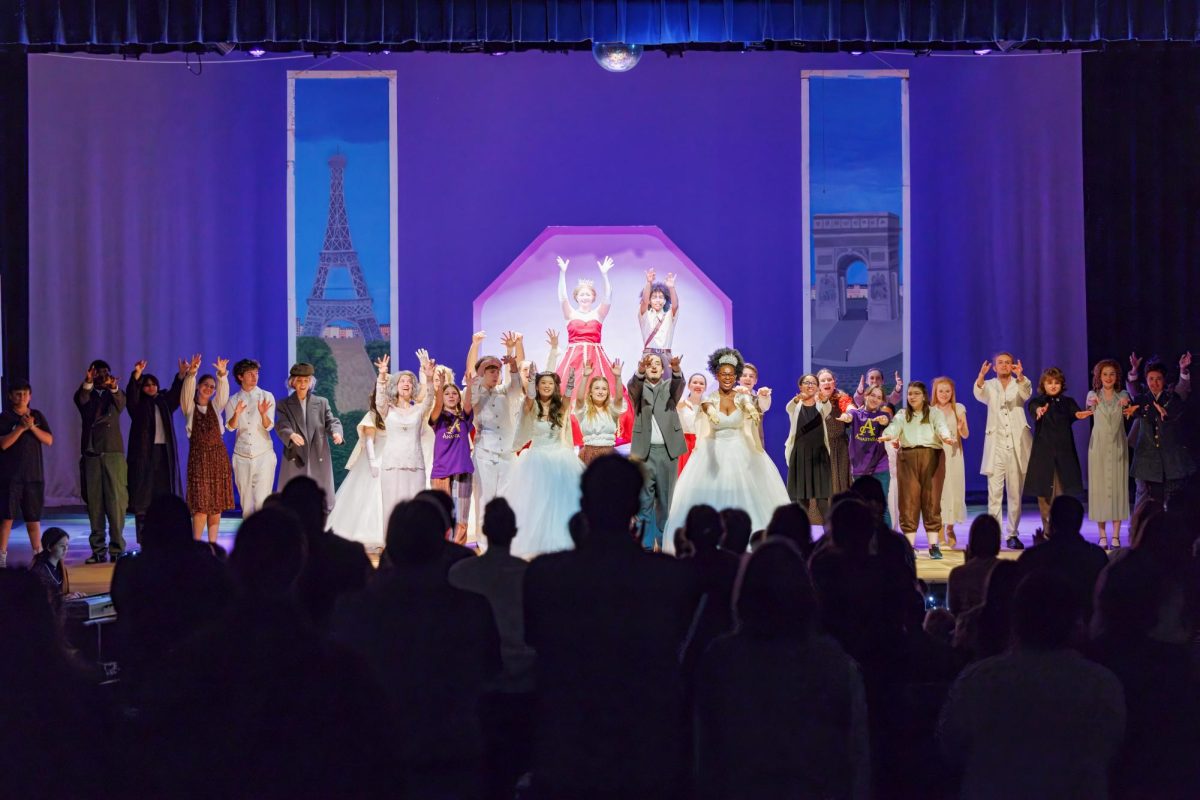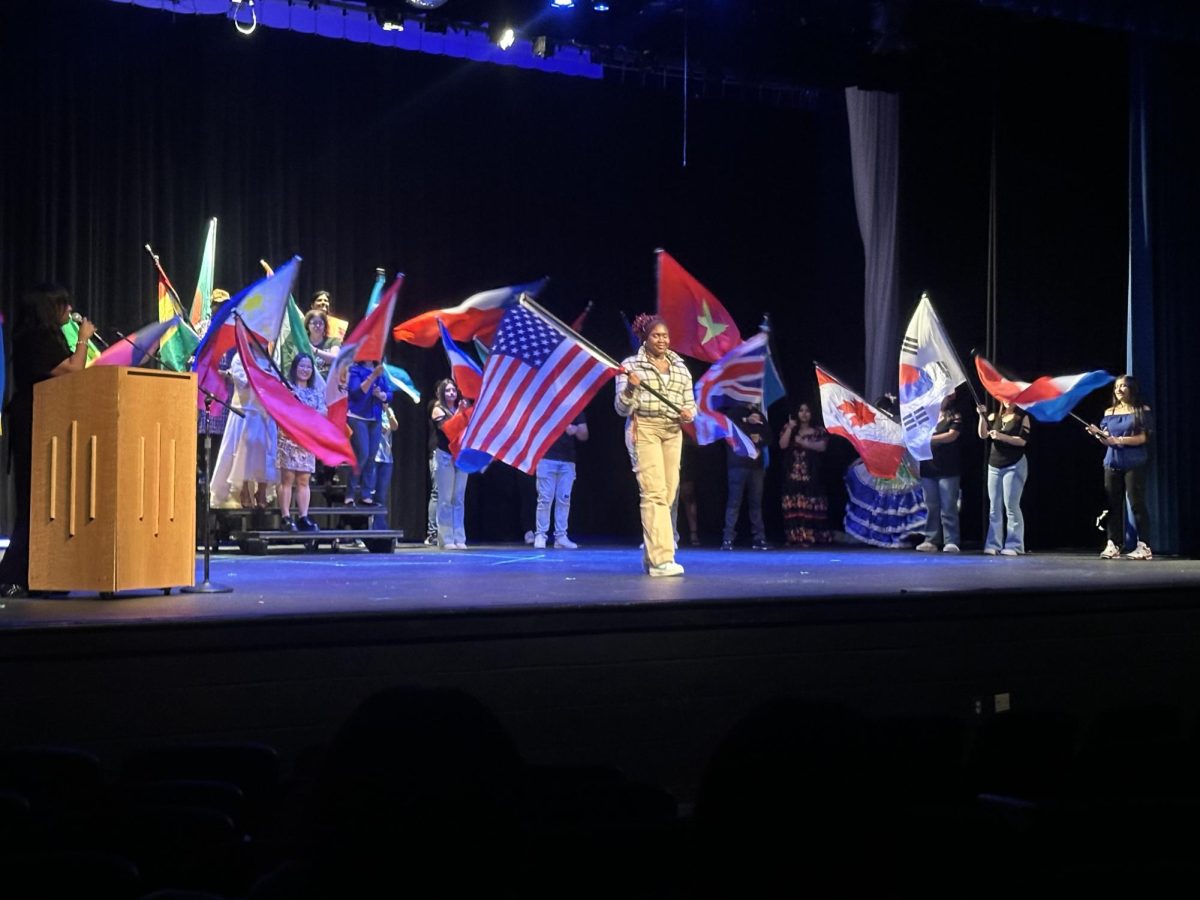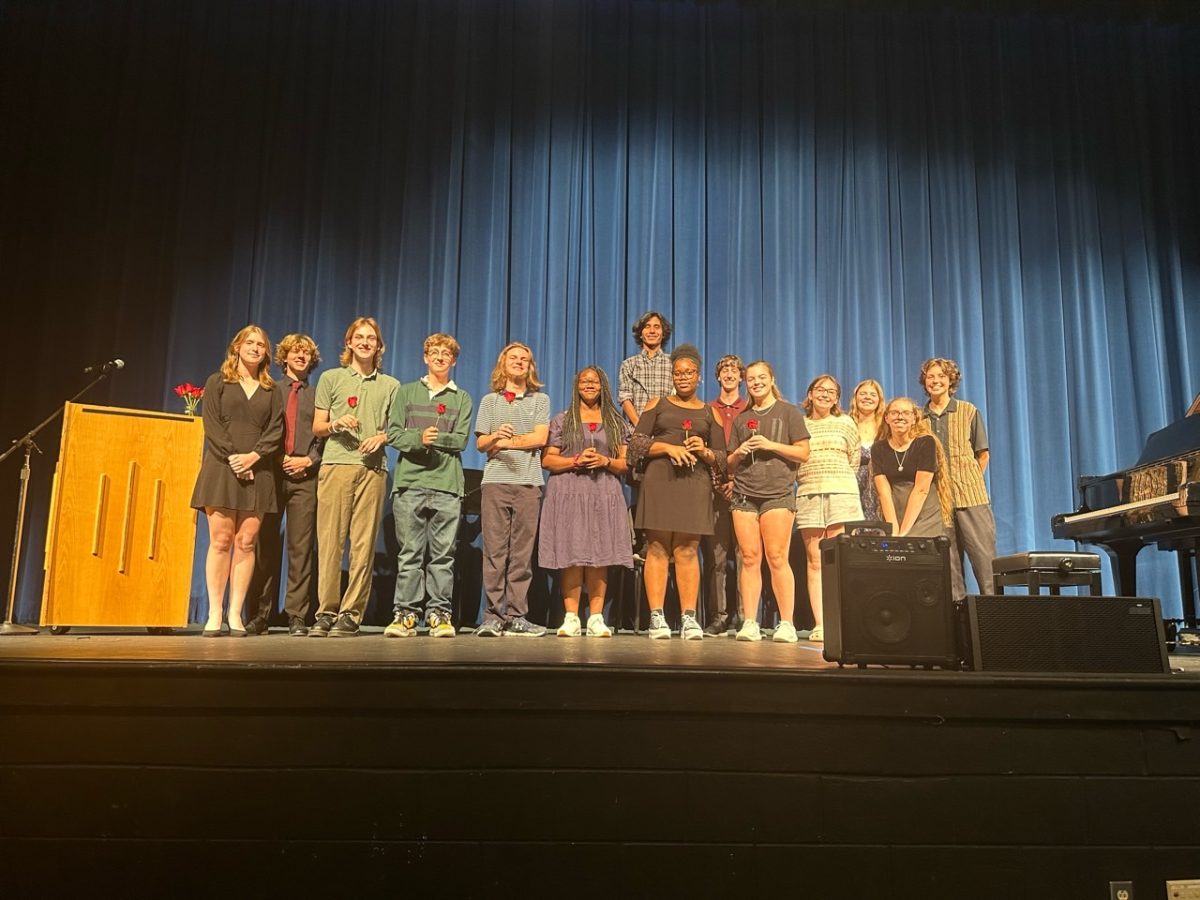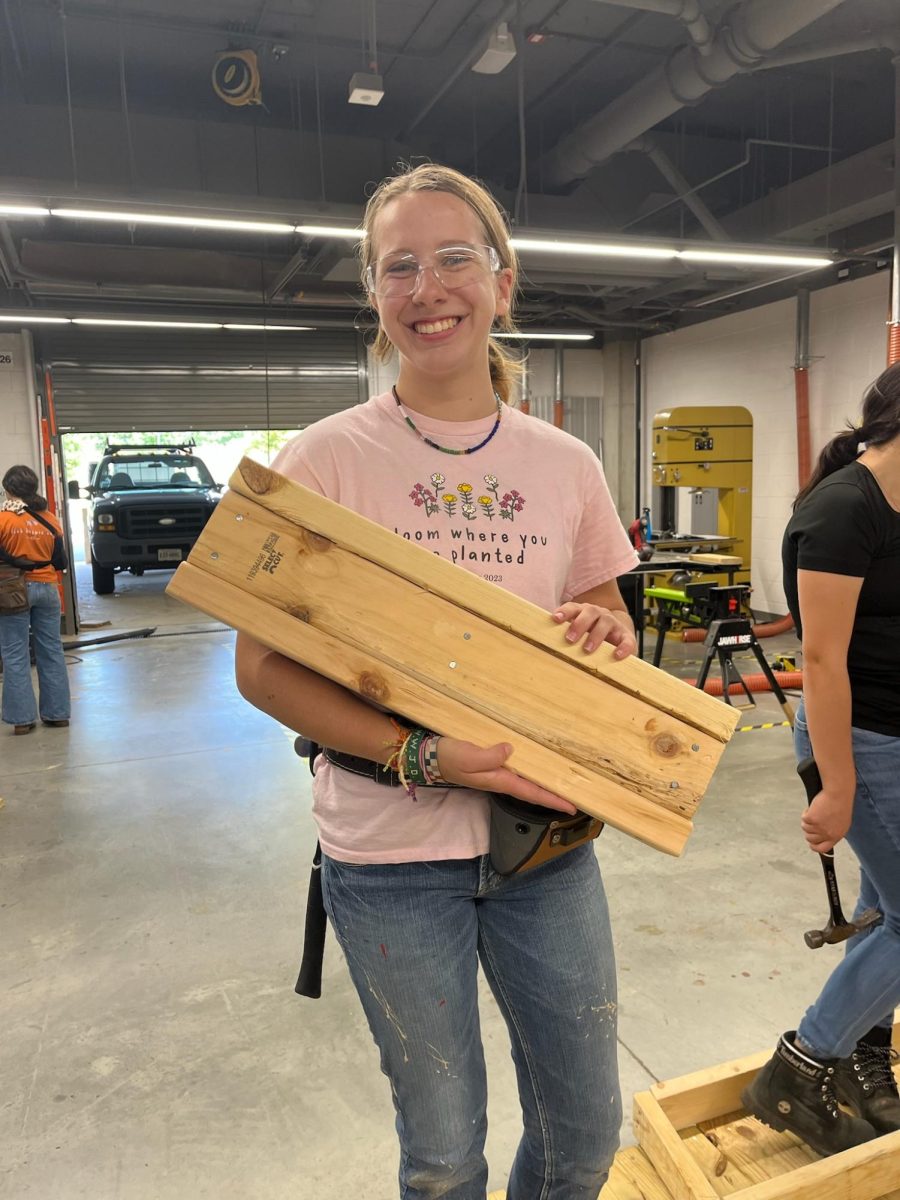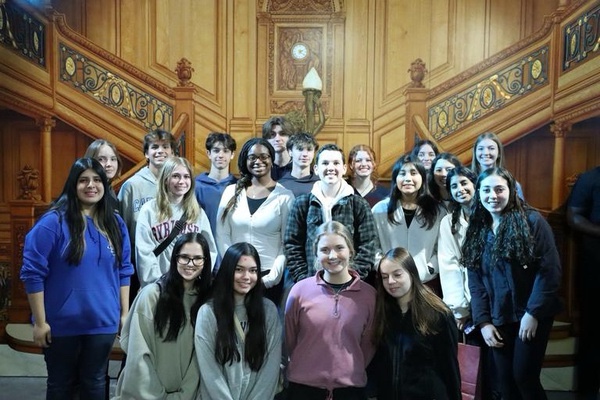By Breanna Shiflett

Most high school students spend seven and a half hours inside a school building each day, so it’s no wonder they begin begging to take lessons outside when the weather is nice. For many schools, this is a request that can’t always be granted. However, thanks to the help of the PTSO, Northern Virginia Nursery and Landscape Association, Mrs. Jacobs, and several other volunteers, students and teachers at Tuscarora have a safe and beautiful environment to learn in and observe.
Since 2010, Tuscarora has improved its outdoor environment with the completion of six major landscaping projects. Three years ago, Loudoun County received an $80,000 grant from the U.S. Environmental Protection Agency through the Chesapeake Bay Small Watershed Grants program, which was administered through the National Fish and Wildlife Foundation. With part of the money, the Big Spring Branch watershed in northern Leesburg, which also partially lies on Tuscarora property, was restored. The branch is “a really good resource for students, and they should be proud of it,” said Mr. Scott Sandberg, who is the Water Resources Engineer for the Loudoun County Department of Building and Development. He also managed the project and was responsible for obtaining the grant.
Some of the other funds received through the grant program went towards planting trees and building an outdoor classroom. Mrs. Mimi Westervelt, the environmental science teacher, guided students in planting 150 trees in the land next to the creek, also known as the riparian buffer. Mr. Sandberg was also involved, stating, “When [students] plant the trees, we usually have them name the tree, and then they can come back in 20 years and see how big the tree is. And they get a lot out of that.” Westervelt was glad to lead the project, as she strongly believes that it is very important for students to be able to experience the outdoors.“We are very fortunate here at Tuscarora to have exceptional opportunities to observe biodiversity including species that inhabit natural streams, deciduous woodland, and meadow habitats,” she said.
Along with Sandberg and Mrs. Leslie Solitario, the landscape architect and master gardener who has led the efforts at Tuscarora, Westervelt has also directed her students in working in the interior courtyard and various other places around the school. Because of their efforts, and those of the PTSO, the school now has spring bulbs, perennials, sunflowers, and numerous native trees outside the school and in the stadium. These native plants are being used with the goal of showing the school’s colors while still keeping seasonal interest in mind and remaining low maintenance. Some of them were also planted with specific pollinator to attract certain insects. Throughout the project, Solitario said that it was “thoroughly invigorating” to work with the kids and to see the collaboration between teachers and their students, and well as the many different types of students that the project brought together.
One student who put an immense amount of time into the landscaping developments was Noah Anderson, a junior whose Eagle Scout project led to the creation of shade tails over the outdoor classroom and a pathway leading to it. When starting the project, Anderson’s goal was to provide a place for science classes to learn where it would be comfortable and interesting, and this has been achieved with the building of a permanent structure thanks to a $10,000 from the NVNLA. “I hope that my project will be visited by students long after I’m gone,” Anderson stated.
In the meantime, it certainly is being used by science classes as he had hoped. Mr. Ryan Connelly, a Biology teacher, said that he tries to use the area as much as possible. “There’s a huge variety of wildlife that’s in there, everything from red-wing blackbirds to a wide variety of other avian life, so it just provides a great outlook and gets people out of the classroom,” he said. “Kids tend to be a little more responsive out there.”
Students are certainly agreeing with Mr. Connelly, but it’s also not just the science teachers and their students who are enjoying the outdoor classroom. While the area is great for science classes to observe the environment, for other classes the structure simply provides an escape from the school building. Emmel El-Fiky is a junior who used the area for discussions in her AP World History class last year. “Everybody was a lot more motivated to talk and participate because we were outside, and that was refreshing,” she said.
Through much hard work and dedication of teachers, students, volunteers, and more, the land around Tuscarora has transformed from a simple flood plain into a beautiful area where people can grab a textbook and relax while still being able to learn. This unique combination not only gives students and staff an exciting chance to get out of the building, but also provides an educational environment while still maintaining a level of comfort.
Thanks to all the help that Tuscarora has received, students are now able to learn through a whole new experience, which is already affecting the student body and helping them to enjoy school more. The work will be completed by the end of the calendar year, so students can look forward to loving the completed landscaping projects and being able to fully enjoy it while still excelling in their studies.
